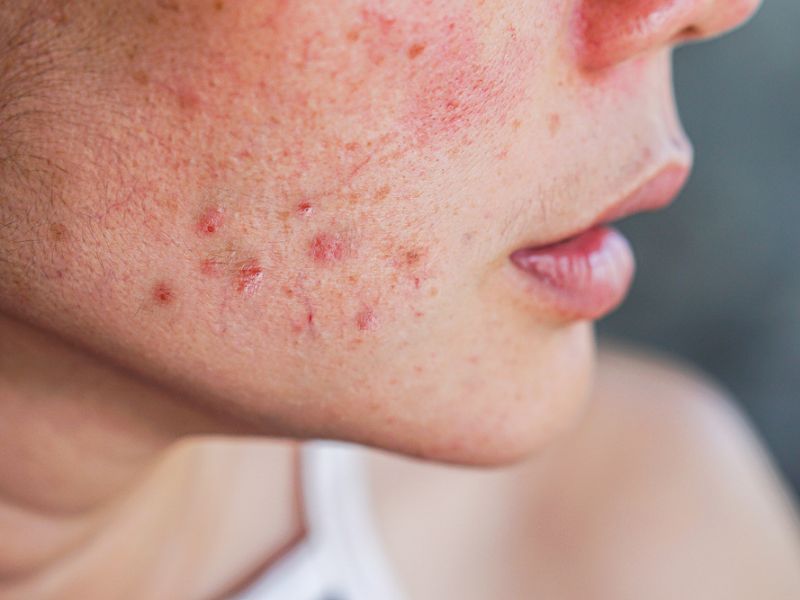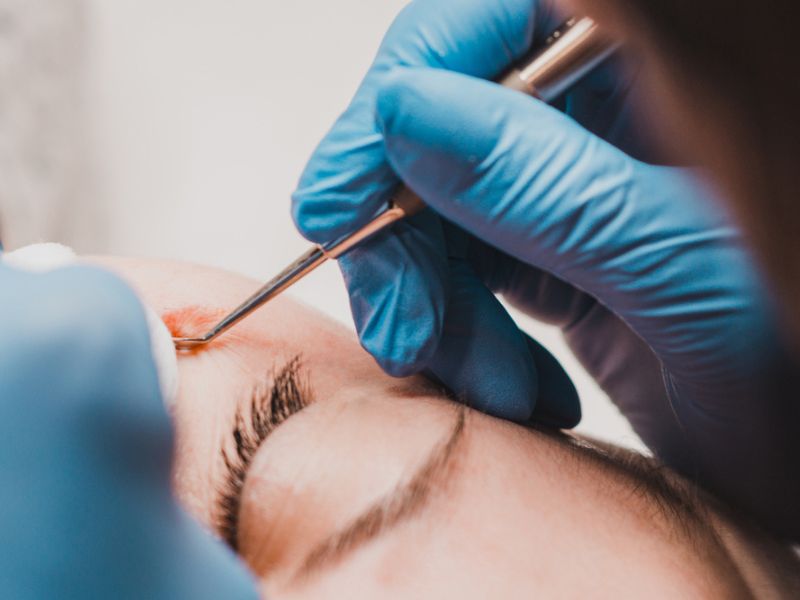A bunch of hard, white spots cover your face, perhaps with a faint blue tint. They are likely milia or small pockets of dead skin. There isn’t anything typical about them, so what could they be?
During skin exfoliation, old cells can get trapped, harden and become cystic, causing milia. Farah Moustafa, MD, director of laser and cosmetics, says milia are made of keratin. They commonly appear on cheeks, eyelids, and noses.

Image Credit: Shutterstock/Doucefleur
Joshua Zeichner, MD, director of Cosmetic and Clinical Research in Dermatology, describes them as pimples with nowhere to go. A Cleveland Clinic study found that approximately 50% of babies at birth had these benign cysts. They can appear on anyone at any age.
In Adults, What Causes Milia?
Dermatology Advisor mentions neonatal milia, the type that appears in infants. Adults are most likely to develop primary milia; there are two less common types, a cluster type and a trauma type. Exfoliation can trap skin cells, but milia can also create for other reasons. Dr Zeichner says these may result from sun damage or heavy skincare products.
A rash or injury to the skin, or prolonged corticosteroid use, can also cause the symptoms. Having milia may prompt you to wonder whether you should see a doctor. It’s not necessary most of the time. Dr Zeichner says that milia are entirely harmless and strictly cosmetic.

Image Credit: Shutterstock/Andrii Anna photographers
Getting Rid Of And Preventing Milia
- It is not a good idea to try to remove them yourself.
- Ensure that you cleanse gently.
- Consider applying retinoid cream topically.
- Don’t forget to wear sunscreen.
- For professional removal, visit a dermatologist.
Conclusion
Getting rid of milia involves de-roofing. Dermatologists use needles to pluck out keratin from your skin by removing the flap that binds it. Insurance doesn’t cover the procedure; the cost usually ranges from $200 to $500.